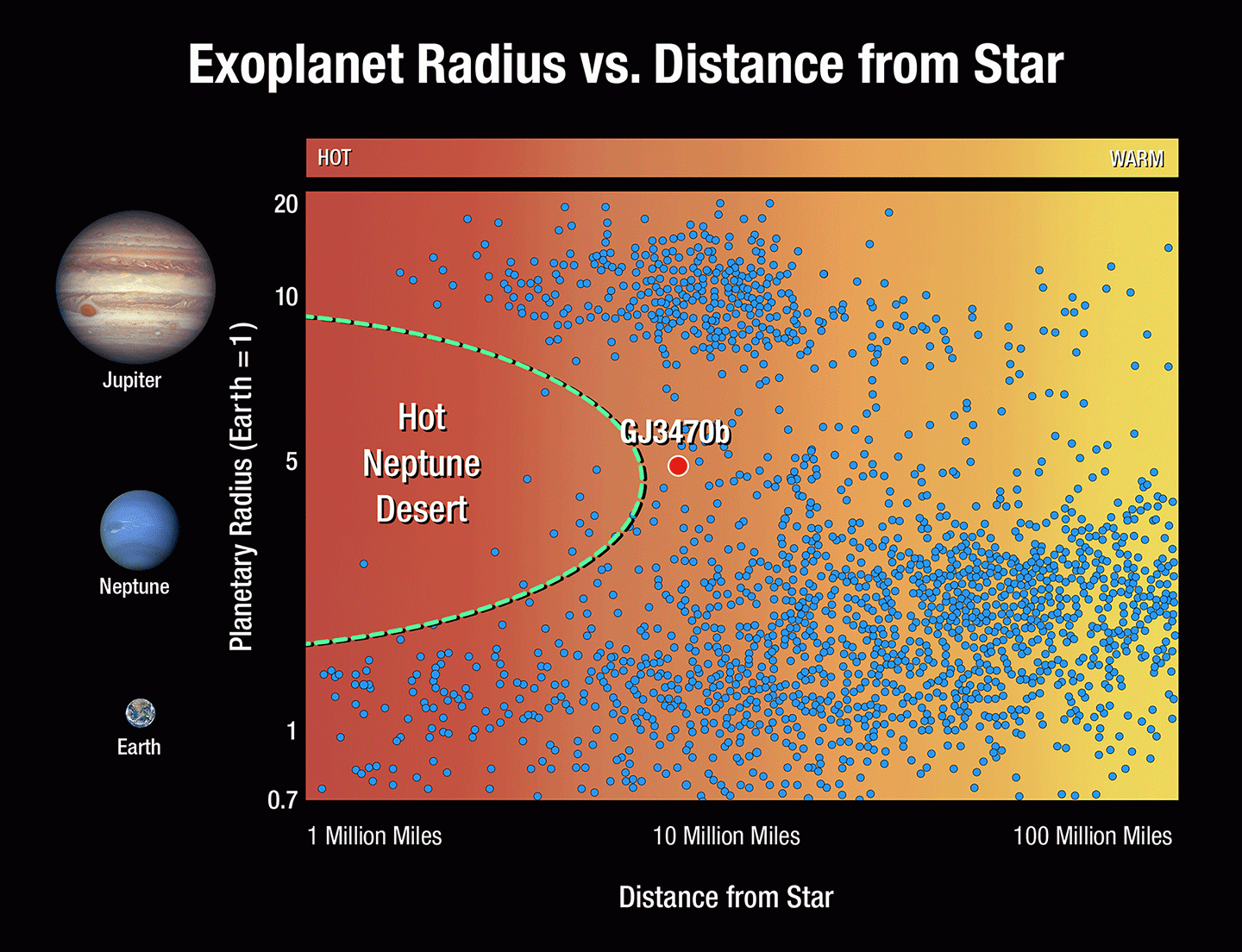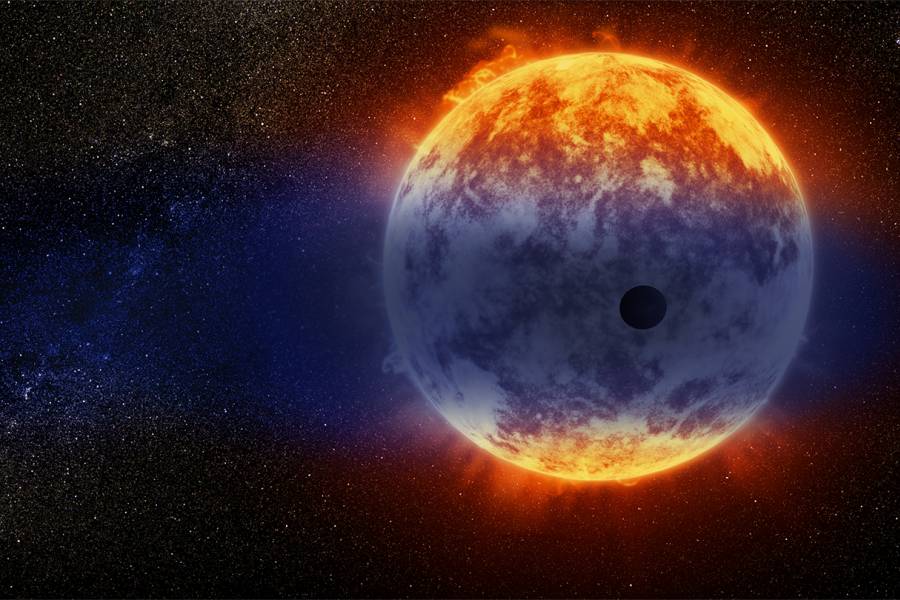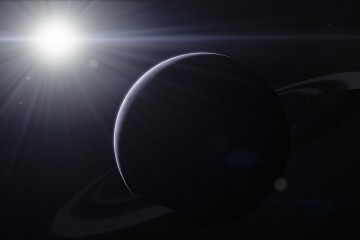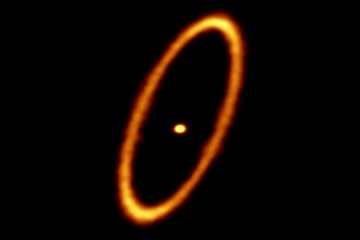The speed and distance at which planets orbit their respective blazing stars can determine each planet's fate—whether the planet remains a long-standing part of its solar system or evaporates into the universe's dark graveyard more quickly.
In their quest to learn more about faraway planets beyond our own solar system, astronomers discovered that a medium-sized planet roughly the size of Neptune, dubbed GJ 3470b, is evaporating at a rate 100 times faster than a previously discovered planet of similar size, GJ 436b.
The findings, published today in the journal of Astronomy & Astrophysics, advance astronomers' knowledge about how planets evolve.
"This is the smoking gun that planets can lose a significant fraction of their entire mass," said David Sing, a Bloomberg Distinguished Professor at Johns Hopkins and an author on the study. "GJ 3470b is losing more of its mass than any other planet we've seen so far; in only a few billion years from now, half of the planet may be gone."
The study is part of the Panchromatic Comparative Exoplanet Treasury program, led by Sing, which aims to measure the atmospheres of 20 exoplanets in ultraviolet, optical, and infrared light as they orbit their stars. PanCET is the largest exoplanet observation program to be run with NASA's Hubble Space Telescope.

Image caption: Each dot represents an exoplanet, plotted based on its size and distance from its star. Planets the size of Jupiter (located at the top of the graphic) and planets the size of Earth and so-called super-Earths (at the bottom) are found both close to and far from their star. But planets the size of Neptune (in the middle of the plot) aren't commonly found close to their star. Such alien worlds are rare, or they were plentiful at one time but have since disappeared.
Image credit: NASA, ESA, and A. Feild (STScI)
One particular issue of interest to astronomers is how planets lose their mass through evaporation. Planets such as "super" Earths and "hot" Jupiters orbit more closely to their stars and are therefore hotter, causing the outermost layer of their atmospheres to be blown away by evaporation.
While these larger Jupiter-sized and smaller Earth-sized exoplanets are plentiful, medium Neptune-sized exoplanets—roughly four times larger than Earth—are rare. Researchers hypothesize that these Neptunes get stripped of their atmospheres and ultimately become smaller planets. It's difficult, however, to actively witness them doing so because they can only be studied in UV light, which limits researchers to examining nearby stars no greater than 150 light-years away from Earth that are not obscured by interstellar material. GJ 3470b is 96 light-years away and circles a red dwarf star in the general direction of the constellation Cancer.
In this study, Hubble found that exoplanet GJ 3470b had lost significantly more mass and had a noticeably smaller exosphere than the first Neptune-sized exoplanet studied, GJ 436b, due to its lower density and receipt of a stronger radiation blast from its host star.
GJ 3470b's lower density makes it unable to gravitationally hang on to the heated atmosphere, and while the star hosting GJ 436b was between 4 billion and 8 billion years old, the star hosting GJ 3470b is only 2 billion years old. A younger star is more active and powerful and, therefore, has more radiation to heat the planet's atmosphere.
Sing's team estimates that GJ 3470b may have already lost up to 35 percent of its total mass and, in a few billion years, all of its gas may be stripped off, leaving behind only a rocky core.
"We're starting to better understand how planets are shaped and what properties influence their overall makeup," Sing said. "Our goal with this study and the overarching PanCET program is to take a broad look at these planets' atmospheres to determine how each planet is affected by its own environment. By comparing different planets, we can start piecing together the larger picture in how they evolve."
Looking forward, Sing and the team hope to study more exoplanets by searching for helium in infrared light, which will allow a greater search range than searching for hydrogen in UV light.
Currently, planets, which are made largely of hydrogen and helium, can only be studied through tracing hydrogen in UV light. Using Hubble, the upcoming NASA James Webb Space Telescope (which will have a greater sensitivity to helium), and a new instrument called Carmenes that Sing recently found can precisely track the trajectory of helium atoms, astronomers will be able to broaden their pursuit of distant planets.
Posted in Science+Technology
Tagged hubble, physics and astronomy, outer space, planetary science, david sing












